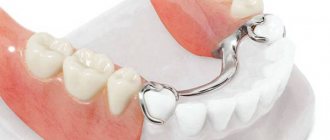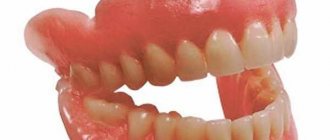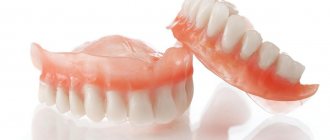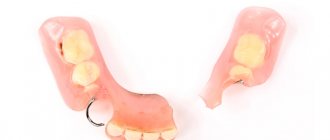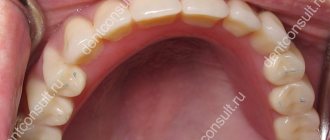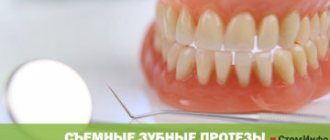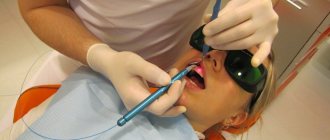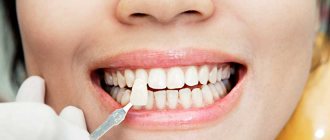The technique of artificial dental restoration of lost organs has made great strides in recent years - orthodontists have modern, high-quality and aesthetic designs in their arsenal, which have practically no contraindications for installation.
At the same time, standard removable prosthetics still remain relevant.
The manufacturing technology of such devices has also undergone major changes, and the use of the products has become much more comfortable, and the materials from which they are made are new and of higher quality. One of them will be discussed in this article.
Material
Acetal is a component of biochemical nature of origin. Classified as a type of synthetic resin. It is based on:
- oxygen;
- carbon compounds;
- chains of hydrogen elements.
You can learn more about acetal in the following video:
The molecular lattice of acetal has a unique structure in which thread-like elongated molecules hold each other quite tightly.
The material is used in medicine without combining it with other substances. This is required by environmental safety and hypoallergenicity.
We bring to your attention a description of the cream for fixing Rocs dentures, as well as detailed instructions for its use. From our article you will learn what a tooth inlay for a crown is.
Basic properties of the element:
- high stability rate;
- resistance to external negative influences of a mechanical nature;
- During operation, acetal practically does not wear off;
- perfectly resists the influence of organic compounds, oils and all kinds of solvents;
- easy to process and polish.
At the same time, the material is considered moderately soft and has good elasticity, which is considered an integral and mandatory condition for high-quality orthodontic products, since it is thanks to this property that the maximum degree of fit of the model and its better fixation are achieved.
It features a wide color palette, which allows you to choose a shade that perfectly matches your natural organs.
Features and Benefits
Compared to analogue structures, prostheses made from this material have a number of distinctive advantages:
- they leave the palatal area open - this makes the wearing process much more comfortable, and the adaptation time is shorter;
- ease of maintenance - you no longer need to purchase special products - cleansing pastes, gels, brushes;
- durability and high strength coefficient , which has practically no analogues;
- the system fastenings are barely noticeable, but at the same time very reliable;
- the installation procedure does not involve preliminary grinding of neighboring organs, which allows preserving their integrity and future health;
- dentures do not contain metal components, which not only has a beneficial effect on external aesthetics, but also eliminates chafing of the soft tissues of the gums and mucous membranes;
- the flexibility of the design reliably protects the enamel surface from premature abrasion, especially in the fastening area.
The use of the model allows the subsequent use of other options for the restoration of lost fragments of the jaw row; - high hygiene - due to its properties, the component does not absorb pathogenic microbes developing in the oral cavity. This eliminates the formation of plaque and unpleasant odor, which is very often present when using one or another version of the prosthesis;
- lightness of the product - the designs weigh quite little and are practically not felt in the mouth;
- the absence of galvanosis factors - a phenomenon that produces the formation of low-strength electric currents in the cavity. This causes a metallic taste, distorted taste and migraines. Galvanosis occurs as a reaction to a metal component, and in this case it is not part of the prosthesis.
Advantages and disadvantages
The acetal clasp prosthesis is installed using the same method as other structures. First I make a strong structure to fix the prosthesis. Mostly a damaged tooth is used. In this case, thorough grinding is not done. There is no risk of damaging the enamel and mucous membranes . It is important to understand that the quality of prosthetics depends on the experience of the doctor.
Advantages of acetal dentures:
- use of modern technologies;
- the prosthesis does not affect the change in tooth structure;
- very rarely can cause an allergic reaction:
- acetal has unique properties and does not affect taste changes.
This material does not cause the development of dental diseases. Especially something like galvanosis. The first sign of the development of the disease is a metallic bite in the mouth. After this, a severe headache occurs.
Disadvantages of acetal dentures:
- over time, the density between the structure and the prosthesis may decrease;
- during the treatment process, the structure of the teeth and jaw may change, and in such cases it will be necessary to make a new structure;
- with prolonged use, the appearance is lost and the color changes;
- The flexibility of the material can be a disadvantage because it leads to shifts in the eating process.
To reduce the risk of defects, the doctor must be very careful during the process of taking impressions and making the structure. Therefore, it is important to take into account the characteristics of each patient.
Despite the presence of shortcomings, the design is in demand. If the doctor is a professional, the patient will be comfortable using such prostheses. Much also depends on the patient himself. If discomfort or pain occurs during the fitting stage, you should definitely inform your doctor. The prosthesis can be adjusted at any time.
Flaws
Like all good things, acetal and products made from this substance also have their disadvantages:
- After a certain period of time, free space appears in the cavity between the structure and the hard gum tissue. To eliminate the problem, relocation is required, which, due to the specifics of the material, is very problematic, but the price is equal to a new system;
- The component is difficult to polish, so its surface is no longer so smooth over time, which creates favorable conditions for the formation of plaque and stony deposits. In addition, there is a risk of staining from pigments contained in coffee, tea and fruit drinks;
- increased flexibility is both an advantage and a disadvantage, since, getting used to the model, a person loses precautions when chewing food fragments, forgetting that it is still a foreign body. Some manufacturers try to solve this problem by making the structure too thick, which does not have a very good effect on the aesthetic content.
Advantages of prosthetics at the “new century” clinic
- Comfortable orthopedic chairs that will allow you to relax and unwind right in the dentist’s office without feeling discomfort;
- Two stages of pain relief - the gum itself is numbed before the injection using a special gel, and then the patient receives a completely painless injection that will last throughout the entire session;
- Isolation of the oral cavity during treatment, thanks to which you don’t have to worry about the instrument accidentally touching your lips or cheeks;
- Possibility to pay for treatment in installments at a fair price;
- Time-tested and certified tools and materials.
There can be advantages and disadvantages to any dental decision. Let's start with the advantages of acetal dentures:
- Price. Acetal is much cheaper, so more people can get the necessary prostheses.
- Comfort. The manufacturing material is lightweight and elastic, thanks to which the patient gets used to the new teeth much faster, without experiencing discomfort.
- Hypoallergenic. The likelihood of an allergic reaction or bacterial infection is extremely low.
- Wear resistance. Acetal has a high level of strength, structures made from it last a long time.
- Convenience. Dentures are compact, they occupy space much less than the oral cavity.
There are also a few minor drawbacks that patients will have to put up with:
- Over time, plaque can form on artificial teeth. Because of this, their shade begins to differ slightly from the patient’s own teeth;
- Sometimes, when eating, the dentures may move slightly in place. This is due to the increased level of flexibility of the material. To get rid of the side effect, experts advise making the structure thicker;
- The bone tissue dries out, eventually forming a space between the installed prosthesis and the gum.
Despite the fact that acetal dentures have a number of disadvantages, their advantages still outweigh the short list. That is why the popularity of a material such as acetal is only growing over time. The design is convenient to install and use, and the favorable combination of price and quality attracts patients.
Design features
The structural characteristics of the material allow its use for the production of various types of prostheses. Let's look at them in more detail.
Clasp prostheses are a one-piece device onto which artificial organs are attached. Comprises:
- an arc-shaped frame is the basis of the device;
- a base copying the anatomical surface of the gum;
- jumpers - thanks to it the prosthesis can be firmly held in place;
- support clamps.
These prostheses are lightweight and easy to use and cause virtually no inconvenience.
The arched frame distributes the load evenly over the entire dentition. This prevents the development of bone atrophy.
The clasps provide excellent fixation and do not injure the surface part of the support units. This allows you to use the device almost constantly, removing it only for hygienic cleaning.
Stages of making a clasp prosthesis
Based on the principle of making the frame, the clasp prosthesis is divided into several types: soldered, solid-cast, milled, and based on laser sintering of nanoparticles of a special metal alloy powder. The last two methods are considered the most progressive and allow you to create a high-precision (up to 10 microns) and comfortable design.
Manufacturing takes place in 4 stages:
- first the dental technician creates a plaster model
- Based on the plaster model, a prototype of the prosthesis is cast and scanned
- using the scan, the frame of the clasp structure is modeled on a computer
- the prosthesis is ultimately sintered or milled.
The result exceeds all expectations - the prosthesis fits tightly to the gums and teeth, does not break and looks very aesthetically pleasing.
Indications
Acetal structures are justified in the following cases:
- implantation is impossible for medical reasons;
- individual intolerance to components of other products;
- periodontal disease in the chronic stage;
- temporary restoration of organ fragments until permanent devices are installed;
- complete or episodic absence of the jaw row.
Indications and contraindications
Acetal prostheses are placed only for certain indications.
They are installed on patients if they have single defects in the dentition, missing front teeth or a group of adjacent teeth in one segment of the jaw.
Acetal dentures are prescribed in cases where a person is allergic to other materials. This design will be the best solution if the patient cannot receive implants.
With the dental apparatus, crowns are easily fixed, which cease to be stable during periodontal disease. Sometimes an acetate prosthesis is placed for a certain period before the implant is installed. Rapidly abraded enamel and deviations in bite can also cause dental prosthetics.
But an orthopedic system made on the basis of acetal has several contraindications. The construction is not installed in the case of a complete absence of teeth or most of them.
There must be at least 6-7 real copies if it is necessary to use a product made of polyformaldehyde. A prosthesis cannot be made if there is atrophy of the alveolar bone of the jaw.
The use of a removable jaw often aggravates the situation.
Contraindications
The use of this type of prosthetics is impossible if:
- there is a tendency to allergic manifestations to elements of this class;
- dental diagnoses in active and chronic forms until they are completely eliminated;
- regular poor-quality or insufficient sanitation of the oral cavity.
We will go into detail about caring for dental implants after they are installed, and we will tell you which devices are most effective. In this article you will find approximate prices for composite veneers.
By clicking on the following link: https://dentist-pro.ru/protezirovanie/nesemnye/koronki/cirkonievaya-na-perednij-zub-opisanie-procedury-stoimost.html you will find out in what cases it is possible to install a zirconium crown on a front tooth.
Types of clasp dentures
Clasp dentures are also divided according to the method of their attachment to the supporting teeth. Unlike completely removable structures, which are fixed by suction to the gum or using special adhesives, fixation and installation of clasp dentures occurs using several types of fastening.
On clasps
Clasp dentures with clasps consist of metal hooks that clasp the abutment tooth in the neck area. The clasp clasp prosthesis is attached without grinding down the enamel, provided that the supporting teeth are not destroyed or affected by severe caries. However, this type is not aesthetic enough - the hooks are noticeable when you smile.
On locks or attachments
A locking clasp prosthesis consists of two parts, one of which is attached to the ground abutment teeth, and the second with the help of locks to the prosthesis itself. Unlike other types, a clasp denture with attachments is more immobile, so the load is distributed evenly on the supporting teeth and the alveolar mucosa.
Clasp prosthesis on telescopic crowns
When installing a clasp prosthesis on telescopic crowns, first fixed metal crowns are placed on the supporting teeth, and then ceramic crowns are placed in the prosthesis.
Manufacturing
Production technology is a complex and lengthy process, consisting of the following stages:
- preliminary – assessment of the clinical condition of the oral cavity, treatment of dental diseases and bringing the dentition to a normal state. Comparison of risks and contraindications;
- taking imprints of the lower and upper jaws - this is done from a special mass that most accurately copies the relief of hard tissues and the anatomy of the jaw apparatus;
- The resulting casts are filled with a plaster composition to obtain a full-fledged three-dimensional copy. All subsequent manipulations will be performed on it;
- gypsum frames are mounted so that they completely replicate the cavity space and are transferred to the laboratory for further processing;
- using special equipment, the wax filler is separated from the mold - artificial organs will take its place;
- the product is ready and requires fitting , during which all defects, shortcomings and dimensional discrepancies are eliminated, after which it is given to the patient. The doctor will tell you in detail about the use of the model and the rules of care.
Manufacturing method
The manufacturing procedure for this design is usually divided into several stages. All of them are produced by dentists:
- To determine the shape, it is necessary to take an impression of the patient's jaw. Even if you need to make a denture for both jaws, it is still necessary to make an impression of both jaws
- Next, a full-size model is created using plaster
- After this, you need to install the model using a special tool. At the same time, measuring the distance is the same as in the patient’s mouth
- Using a special apparatus - an articulator, the wax elements are replaced with artificial ones, thereby creating a complete model
- This model helps in the future to create the final design in acetal
- The final stage includes grinding and adjusting the dimensions to the most suitable and comfortable one for the person’s jaw.
Care instructions
The list of useful procedures is extremely simple:
- behave with dentures in the same way as with natural teeth - brush thoroughly in the morning and evening, use rinses that wash away food fragments and effectively fight germs and bacteria;
- It is advisable to remove the device daily for at least half an hour. During this period, it is placed in a special composition that prevents the appearance of pigmentation and carries out antiseptic treatment.
This way the product will last much longer, while maintaining its visual appeal. It is important to understand that with any option of artificial prosthetics, it is the subsequent regular and careful care of the structures that determines how acceptable this option will be and justify itself as a way to replace lost organs.
Trauma to the gums under the clasps of the prosthesis –
Gum trauma is a problem with nylon partial dentures. A partial removable denture always has clasps, which are necessary to secure the denture to the remaining teeth, as well as to distribute chewing pressure on them. For dentures made of plastic and clasp dentures, such clasps are made of metal, and they transfer the chewing load from the denture to the teeth.
Soft nylon dentures have gingival type clasps made of elastic nylon (Fig. 8-10). The gingival type of clasps means that the clasp does not just wrap around the crown of the tooth, but mainly lies around the gum around the tooth. Therefore, such clasps transfer the chewing load specifically to the gum around the tooth, leading to atrophy of the bone around the teeth and a decrease in the height of the gum.
What do the clasps of a nylon denture look like: photo
Important: the longer you wear such a prosthesis, the more pronounced the subsidence of the prosthesis, which we described above, will be.
Accordingly, the more pronounced the trauma to the gums around the teeth will be.
After all, when the prosthesis sag, the gingival clasps will put more and more pressure on the gum around the remaining teeth, injuring it more and more, and in some cases they can even tear it away from the teeth.
Prices
The average cost of such devices is in the analog price line of this group of products, depending on the region, the status of the medical institution, as well as the size of the design and the amount of consumables.
Based on the listed factors, the approximate cost of an acetal denture will vary in the range from 28 to 30 thousand rubles.
This includes not only the price of the device, but also preliminary procedures, treatment, and subsequent doctor’s recommendations. Sanitation of the oral cavity and elimination of complex dental diagnoses are not included here - you will have to pay for them separately, according to the clinic’s prices for this type of service.
Types of acetal prostheses
Dentures are made from acetal for both one tooth and the entire jaw. Its unique properties, primarily resistance to breakage, open up great prospects in orthodontics. Today there are three main areas of use of this material:
- dental crowns,
- clasp dentures,
- clasps for fastening dentures.
Clasp designs
An acetal clasp-type prosthesis is a cast, one-piece removable structure (see photo), consisting of the following parts:
- frame,
- jaw arch, exactly repeating the relief of the owner’s jaw, artificial teeth are attached to it,
- fastening structures (clasps, attachments) that fix the prosthesis in the mouth.
The advantage of acetal dentures is that the teeth on which the attachments will be installed require almost no grinding. This is essential for clasp structures. Acetal clasps do not injure the gums. If acetal clasps are not enough for the strength of the product, then a combination with metal is used, and the attachment is made of acetal. Prosthetics are carried out in the following sequence:
- examination and sanitation of the oral cavity, elimination of all inflammatory processes,
- making a decision on the type and design of the future prosthesis,
- making casts of jaws and silicone impressions,
- modeling of jaws from plaster,
- applying filler rollers to the gypsum surface,
- fitting of the prosthesis project,
- making a base,
- fixation of artificial teeth in it,
- re-fitting and elimination of modeling defects,
- casting an acetal prosthesis,
- installation of the structure.
Acetal clasps for clasp dentures
Structurally, metal clasp systems are no different from acetal systems. To disguise clasps in metal clasp dentures, you can replace the metal with acetal. Then the fastenings will not be visible.
This replacement is possible due to the unique properties of polyformaldehyde, which has high strength, resistance to deformation and excellent aesthetic characteristics. In addition, acetal is compatible with metal, is lightweight, does not injure the gums and minimizes discomfort from dentures.
Acetal as dental crowns
The removed tooth can be replaced with an acetal prosthesis with fastenings in the shape of butterfly wings, which will fill the void in the jaw row and hold the adjacent teeth in place (we recommend reading: “butterfly” denture: what is microprosthetics in the absence of 1-2 teeth?). This procedure refers to dental microprosthetics and can be used to restore from 1 to 3 teeth. The advantage of an acetal crown is the speed of its production and ease of fixation. The process of installing an acetal prosthesis takes several hours and consists of:
- Taking an impression of the tooth to be removed, as well as neighboring units in the row. This procedure is performed before the removal operation and uses special compounds. Impressions of adjacent teeth are needed to make wings.
- Casting an acetal denture from an impression and molding the retainers for it.
- Trying on a butterfly tooth, usually one is enough.
- Installation and issuance of recommendations for operation and maintenance.
INTERESTING: how to get used to removable dentures?
Reviews
Acetal is a material that has found its application on the Russian dental products market relatively recently. Prostheses made from it have both their fans and ardent opponents, while their use is rapidly gaining popularity.
If you have personal experience using this type of structure, or are just planning to install them, you can share your own opinion about the pros and cons of this method of artificial dental restoration below this article, in the “comments” section.
If you find an error, please select a piece of text and press Ctrl+Enter.
Alternatives to nylon dentures -
- New type of dentures Acry-Free – this type of denture is similar to nylon ones in that it has little flexibility. However, the elasticity of Acri-free prostheses is much less, and thanks to this there are not so many side effects. Such prostheses are made from the latest acrylic plastic, which does not require the use of a toxic monomer (to which many patients are allergic). As we have already said, Acry-free prostheses have slight flexibility, excellent aesthetics (the same as nylon prostheses, but which are not lost over time). They are suitable for prosthetics for both complete and partial absence of teeth. More information about this prosthesis can be found in the link above.
- Clasp-type dentures (Fig. 12) are the best option for prosthetics in case of partial absence of teeth. (Fig. 12). It is devoid of all the disadvantages that nylon dentures have. Such prostheses have a metal arch passing from the side of the palate or tongue (which allows you to dramatically reduce the volume of the plastic base of the prosthesis). This type of denture will be the most comfortable for chewing. The disadvantage of clasps with a clasp type of fixation is that metal clasps get into the smile line, but this can be avoided by replacing the clasp type of fixation with a locking one.
- A denture made of ordinary acrylic plastic – such dentures have a rigid base and perfectly distribute chewing pressure. This denture, if well made, is quite comfortable for chewing. Its advantage is the price, because... Today this is the most affordable type of prosthesis. It is used for both partial and complete absence of teeth.
- Conditionally removable type of prosthesis (Fig. 11) - fixation of prostheses made of acrylic plastic or Acry-free material - can be improved by installing 2-3 implants under the prosthesis. This can be quite necessary, because... With complete absence of teeth, sometimes it is simply impossible to achieve good fixation of the prosthesis. As a result, the prosthesis will be fixed on the implants due to locking fasteners, and such a prosthesis can only be removed with the help of additional force. More information about this type of prosthesis can be found in the link above.
- Fixed prosthetics on implants – in the case of complete absence of teeth, there are several implantation methods that allow you to obtain a completely permanent bridge prosthesis within 3 days after surgery. Of course, this will cost much more, but you will chew with your own teeth, which will not need to be removed. These are the so-called one-stage implantation techniques with immediate prosthetics –→ basal implantation technique,→ implantation according to the All-on-4 protocol.
We suggest you familiarize yourself with the Taste of blood in the mouth, causes and solutions
